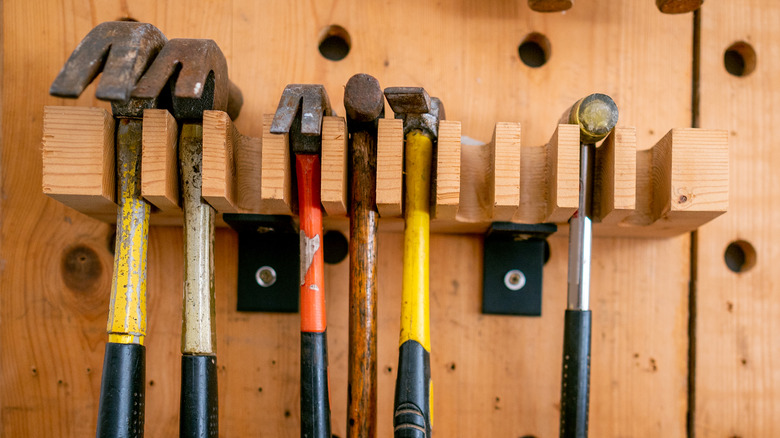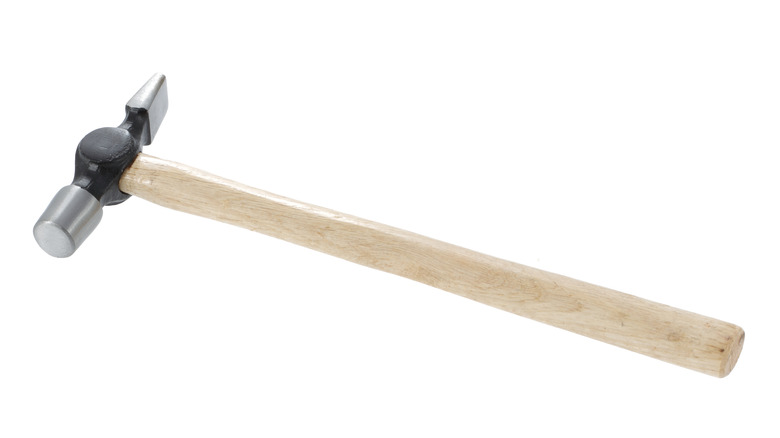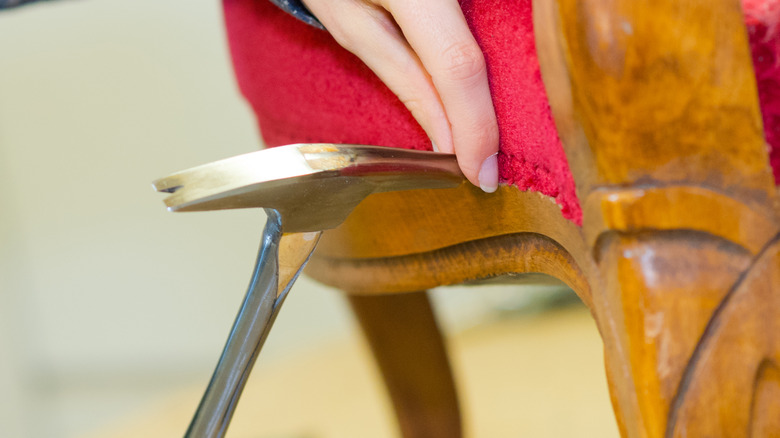Tack Hammer Vs. Pin Hammer: How To Pick The Right Tool For The Job
We may receive a commission on purchases made from links.
Hammers are as simple in design as they are essential to your home garage or tool kit. And yet despite basically being just some metal on the end of a wooden or metal stick, they come in a shockingly large variety of shapes, sizes, and specializations.
That's why we have ball peen hammers, claw hammers, sledgehammers, and so on. Each one has its own kinds of tasks it excels at — though outside of a few exceptions you can pretty much expect to use any one of them to knock some manner of spikey thing into some other manner of surface.
The same goes for pin hammers and tack hammers. As you might expect, they're primarily built to tackle their respective namesakes — though there's a bit more nuance to their intended purpose than simply "tack hammers for tacks" and "pin hammers for pins." (Except other hammers. Never smack two hammers of any kind together.)
Why a pin hammer?
Pin hammers tend to be fairly small and lightweight when compared to other hammers, most often constructed with a wooden handle and iron head. The face is probably about what you'd expect to see on similar types of tools, but the wedge (rather than a claw or rounded peen) at the back of the head stands out a bit.
Its most common use is for hammering in panel pins, which are meant to be small but sturdy and ideally used to attach backing to cupboards, wardrobes, and so on. However, as ABM Tools notes, pin hammers are also useful for small nails and even tacks. As you might expect, the face is used to knock those small nails and pins into wood, while the wedge on the other end is for finishing the hammering to drive the pin or nail the rest of the way.
Basically it's a more compact and precise kind of hammer, with a head designed to better fit into small spaces — like, say, a narrow corner.
When to use a tack hammer
Tack hammers are also relatively small and light in comparison to a standard hammer, though with a much different steel head shape. Instead of the more common tapered neck and flat cylindrical face, they're more straight-edged and slightly tapered, with a claw at the back that looks more like a tuning fork.
They're also much more specialized in that you really don't want to use them on anything other than tacks — so it's best not to try and hammer any nails with one. Instead, you'll want to save them for projects that involve shoe tacks, fabric tacks, etc. The small, slightly pointed head is meant to make it easier to hit those tacks exactly where you want.
That claw-ish end on the opposite side of the face is a little more variable, however. On some tack hammers it looks and functions much more like a smaller version of a claw hammer's claw, used to pry tacks out of place. The more tapered "tuning fork" looking design, on the other hand, is usually magnetized and intended to help you get tacks in place — just place the tack on the magnetic end and tap it in to start, then flip to the flat face and hammer it in the rest of the way.


